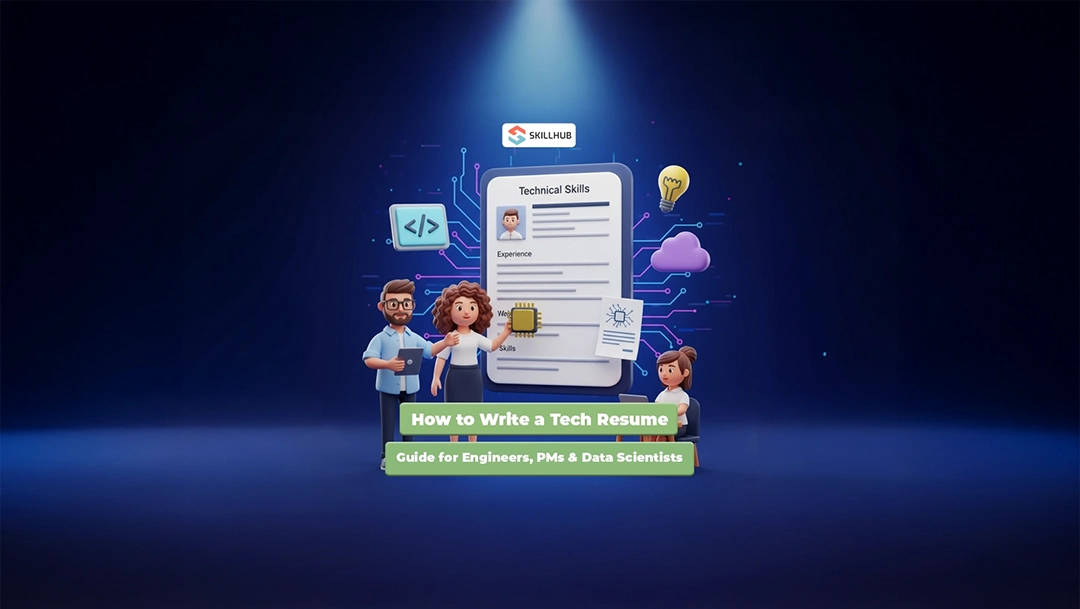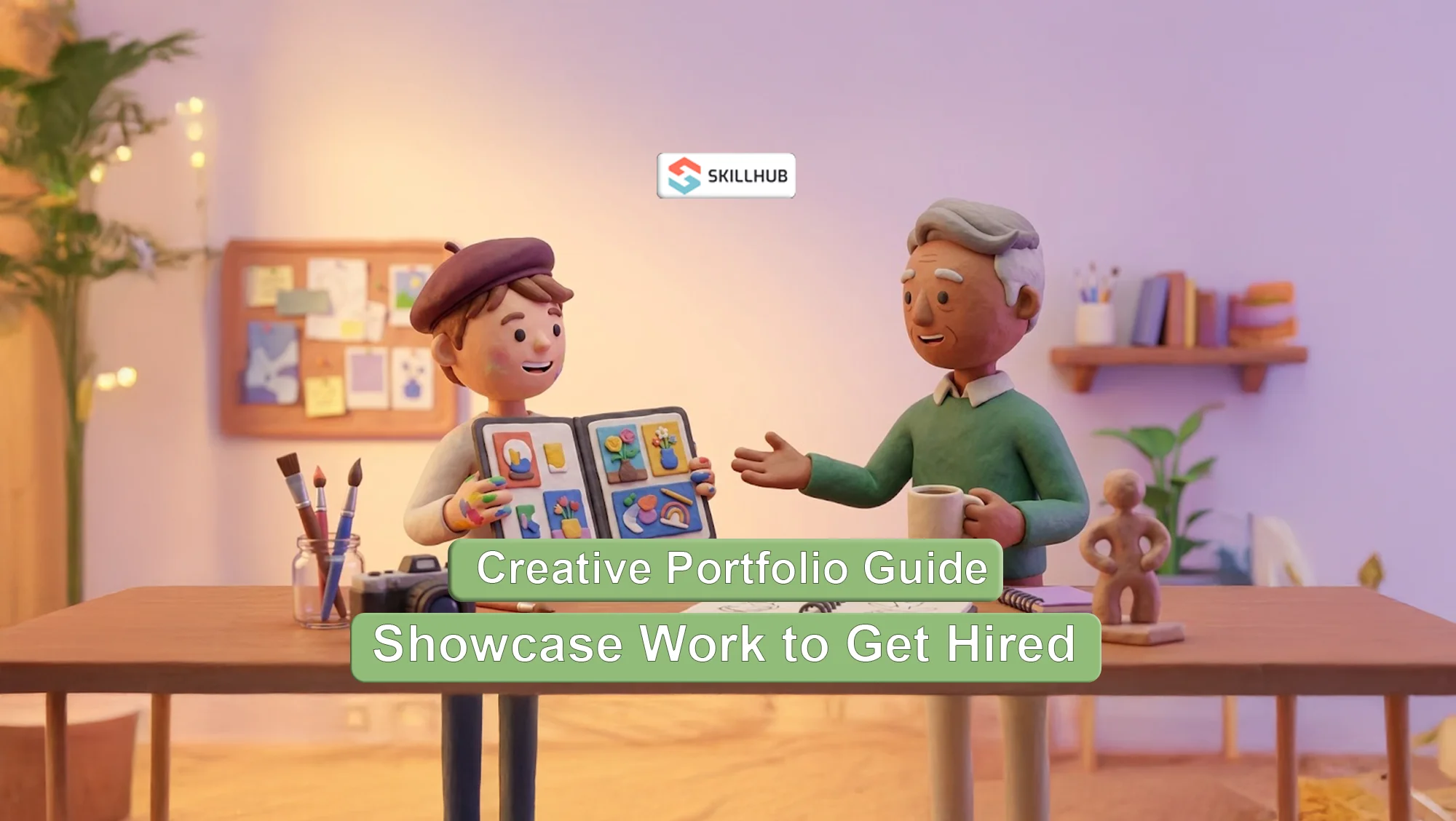How to Write a Tech Resume: A Guide for Software Engineers, PMs, and Data Scientists

A tech resume is not a standard corporate resume. It is a technical specification sheet, a data-driven argument, and a strategic document all in one. Submitting a generic resume into the tech industry's hyper-competitive applicant pipeline is the equivalent of submitting a bug-filled piece of code into a production environment it will be rejected, and it will fail, fast.
The challenge is unique because a tech resume must survive two distinct, high-stakes filters:
- The Machine (ATS): An Applicant Tracking System that scans your document for precise, non-negotiable keywords (e.g., "Python," "AWS," "SaaS," "Agile") and discards any application that doesn't meet its relevance threshold.
- The Human (Technical Screener): A time-poor, highly skeptical hiring manager often a Senior Engineer or a Director of Product who will scan your resume for proof of your technical depth, problem-solving skills, and business impact.
A resume that is "fluffy," full of clichés, or focused on "responsibilities" rather than "results" will be instantly dismissed by this second filter. This definitive guide provides a strategic framework for writing a tech resume that satisfies both the machine and the human, with specific strategies tailored for the three most in-demand roles: Software Engineers, Product Managers, and Data Scientists.
The Foundational Mindset: Your Resume is a Technical Spec Sheet, Not a Story
In most industries, a resume tells a chronological story of your career. In tech, your resume is an evidence log. The recruiter and hiring manager are not looking for your life story; they are executing a query. They have a problem (e.g., "I need a backend engineer who understands microservices and AWS"), and they are scanning your document for the answer.
Your primary job is to provide that answer as quickly and efficiently as possible. Clarity, precision, and data trump prose. Your resume must be skimmable, dense with relevant technology keywords, and focused on quantifiable impact. Every line item must be a "spec" that proves your capabilities.
As a hiring manager at a FAANG company, I spend less than ten seconds on the first pass. I am not reading; I am searching. I look for the tech stack first, then I look for quantified impact. If I can't find both in the top half of the first page, I move on. I do not have time to 'interpret' your experience.
Core Sections for Every Tech Resume
While we will tailor the content later, the architecture of a high-impact tech resume is specific and must be optimized for technical recruiters.
The Technical Skills Summary (The Most Important Section)
This is the most significant difference from a standard resume. In tech, the Skills section belongs at the very top of your resume, directly below your contact information and summary. Do not bury it at the bottom. The hiring manager needs to validate your tech stack before they will invest time in reading about your experience.
This section must be meticulously organized and curated. Do not list "Microsoft Office." Do not list "Communication." It is exclusively for provable, technical, hard skills.
How to structure it:
- Do not use a paragraph or a long, comma-separated list.
- Do use clean categories. This makes you look organized and allows the recruiter's eye to find what they need instantly.
This categorized approach is a core principle of how to list skills on a resume effectively.
The Work Experience Section: The "X-Y-Z" Formula
This is the "proof" section. Every bullet point is a chance to prove the skills you just listed. Do not list your duties (e.g., "Was responsible for backend development"). Use a formula that connects your action to a result and a technology.
The best formula for tech is the X-Y-Z Method:
- Accomplished [X]... (The achievement)
- ...as measured by [Y]... (The quantifiable result)
- ...by doing [Z]. (The technology or method used)
You can arrange this in any order, but it must contain all three parts.
Putting it all together:
- Weak (Duty): "Wrote Python scripts for data processing."
- Strong (X-Y-Z): "Reduced data processing time by 40% (Y) by architecting and implementing a new ETL pipeline (X) using Python, Airflow, and AWS S3 (Z)."
- Weak (Duty): "Worked with the product team to build new features."
- Strong (X-Y-Z): "Launched a new checkout-flow feature (X) that increased conversion rates by 15% (Y), by collaborating with PMs and building new API endpoints in Node.js (Z)."
This method is the foundation of how to list work experience on a resume in a way that provides irrefutable evidence of your value.
The Projects Section (Your Secret Weapon)
For engineers and data scientists, a "Projects" section is not optional. It is your secret weapon, especially if you are early in your career or transitioning. Personal projects, open-source contributions, or complex capstone projects are tangible proof of your passion and your ability to build something from scratch.
- What to include:
- Project Name (and a link to GitHub): This is non-negotiable. An active GitHub profile is your secondary resume.
- The Tech Stack: List the 2-3 key technologies you used.
- The "Why": A one-sentence description of the problem the project solves. (e.g., "A full-stack web app that scrapes and visualizes real-time housing data to identify market trends.")
Tailoring Your Resume: Engineer vs. Product Manager vs. Data Scientist
A "tech resume" is not one-size-fits-all. The hiring manager for a software engineer is looking for fundamentally different evidence than the hiring manager for a product manager. You must tailor your language and achievements to the specific "persona" of your target role.
Strategy for the Software Engineer (Focus: "How")
- Your Audience: A Senior/Staff Engineer or Engineering Manager.
- What They Care About: How you built it. They are looking for technical depth, clean architecture, and scalability. Your resume must prove you don't just write code, but you write smart code.
- Key Language: "Architected," "Refactored," "Optimized," "Scaled," "Debugged."
- Example Bullet Points:
- "Optimized the main database query by adding new indices, reducing API response time from 1200ms to 200ms."
- "Refactored a monolithic legacy service into 5 scalable microservices using Docker and Kubernetes, improving deployment speed by 90%."
- "Architected and built a new real-time analytics dashboard using React and WebSockets to serve 10,000+ concurrent users."
Strategy for the Product Manager (PM) (Focus: "Why" and "What")
- Your Audience: A Director of Product, VP, or C-Level Executive.
- What They Care About: Why it was built and what business impact it had. You are the "CEO of the product." Your resume must prove you can make smart decisions that drive business metrics.
- Key Language: "Launched," "Defined," "Prioritized," "Measured," "Grew," "Go-to-Market Strategy."
- Example Bullet Points:
- "Defined and launched a new onboarding flow based on user interviews and A/B testing, increasing new user activation by 35% in Q2."
- "Managed the product roadmap and backlog for a 12-person agile team, prioritizing features that led to a 10% reduction in customer churn."
- "Led the go-to-market (GTM) strategy for a new API product, acquiring 50 new enterprise clients and generating $1.5M in ARR in the first year."
Strategy for the Data Scientist (Focus: "So What?")
- Your Audience: A Head of Data or a key business stakeholder.
- What They Care About: So what? You built a model with 95% accuracy... so what? A data scientist's value is not in building models; it's in delivering insights that lead to smarter business decisions.
- Key Language: "Modeled," "Forecasted," "Analyzed," "Advised," "Drove decision-making."
- Example Bullet Points:
- "Built a customer churn prediction model using Python (Scikit-learn) with 92% accuracy, allowing the marketing team to target at-risk users and reducing churn by 18%."
- "Analyzed user behavior data from 10M+ users to identify a key drop-off point, leading to a product change that improved user retention by 5%."
- "Presented a complex pricing sensitivity analysis directly to senior leadership, which formed the basis of a new pricing strategy that increased average revenue per user (ARPU) by $10."
The Expertise Barrier: The Recruiter vs. The Tech Lead
Here is the central challenge: your resume must successfully pass two distinct audiences.
- The Recruiter: This person is often non-technical. They are using your resume as a "checklist" against the job description. They need to see the exact keywords (ATS, JIRA, Python, SaaS) in a clear, easy-to-find Skills section.
- The Tech Lead / Hiring Manager: This person is highly technical. They hate "fluff" and clichés. They are reading your experience bullet points to find proof of how you think.
Writing a single document that satisfies a non-technical keyword-scanner and a deeply technical, skeptical expert is an art form. It requires a perfect balance of ATS optimization and deep, project-level storytelling. This is where most self-written tech resumes fail. They are either too fluffy for the tech lead or too disorganized for the recruiter.
Conclusion: Your Resume is Your Code
In the tech industry, your resume is a reflection of your work. It must be clean, efficient, well-architected, and bug-free. It must be meticulously commented (with quantifiable results) and built to scale (by proving your impact).
By following this guide, you can move beyond a simple "list of jobs" and build a powerful, data-driven "spec sheet" that proves you are the best possible solution to the company's problem.
Ready to ensure your technical resume is perfectly engineered to beat the ATS and impress a FAANG-level hiring manager? Consult with a Skillhub Career Expert today.
%20(1).png)



%20(1).webp)